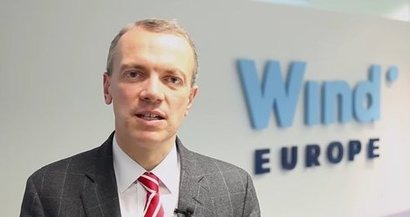
The release of the European Commission’s renewables progress report shows that the EU is on track to meet its renewable energy target by 2020. The share of renewables in the EU’s total energy use reached 16.4 percent in 2015. Four countries – Ireland, Luxembourg, the Netherlands and the UK are expected to miss their 2020 commitments. The outlook is less clear for the period after 2020, given that industry and investors need clarity on volumes and regulatory frameworks in the years ahead to be able to continue investing in Europe. Without this, financing and deployment of new projects is likely to stall after 2020.
“The Commission has reinforced its clear commitment to the energy transition in Europe with renewables at its heart” said Giles Dickson, Chief Executive Officer of WindEurope. “The Clean Energy Package is the blueprint for this. The Council and the European Parliament need to start working seriously on the Commission’s proposals. The Member States also need to start defining in their National Energy and Climate Plans how they will deliver the transition at national level. And that means all Member States. Today only 7 out of 28 have clear plans and policies in place for renewables beyond 2020. Over half the Member States invested nothing in wind energy last year.”
Mr Dickson added that Member States also need to focus even more on the regional angle in energy policy. The Commission has rightly highlighted the importance of regional co-operation in the SOTEU report, which is key to the functioning of the single electricity market. It’s key also for large investments such as in offshore wind. The 10 countries that signed the North Seas initiative last year was a great start, but what is really needed is more regional cooperation all round.
To meet the targets for 2020 and 2030, there are two challenges: replacing fossil fuels in transport and heating with electricity; and making sure it’s clean electricity. The European Commission wants CO2 emissions from transport to fall by 70 percent in 2050. This represents a huge opportunity for the wind industry, and it’s also Europe’s best bet to start reversing the slow decline in electricity demand in Europe.
Image: Giles Dickson, Chief Executive Officer of WindEurope
For additional information:

